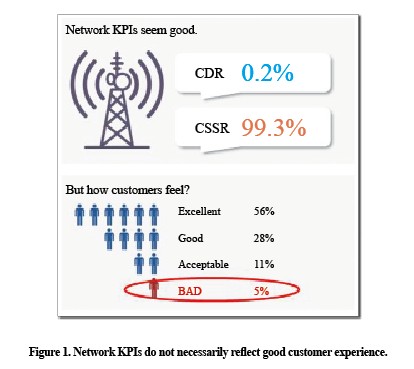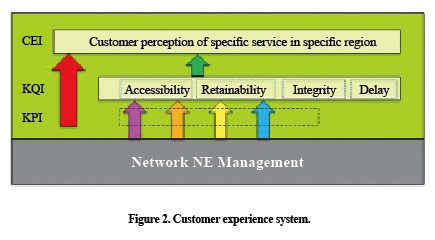Monitoring and Improving Customer Experience
Mobile broadband has boomed over the past few years, and its momentum will continue. It is estimated that the number of terminals connected to mobile broadband networks will be at least 1 billion more than the world’s population by 2017. By 2020, mobile data traffic will be 1000 times higher than that in 2010.
However, the surge in mobile data traffic has not resulted in significant revenue growth for operators. GSMA research indicates that worldwide mobile revenue will merely grow from USD 1.5 trillion in 2011 to USD 1.9 trillion in 2015, far slower than the growth in data traffic. Converting increasing data traffic into revenue is a new challenge for operators.
People are becoming more and more concerned about coverage, speed, and experience when using mobile broadband networks. An increasing number of people are willing to pay more for guaranteed quality of experience (QoE). In some developed countries, more than 20 per cent of customers have such demands. Monitoring and guaranteeing customer experience is the key to improving network value, and it’s becoming critically important in network operation.
High Network KPIs Do Not Mean Good QoE
Traditionally, network OAM has been vertically structured. A dedicated network, such as a radio access network (RAN), core network (CN) or bearer network, has its own proprietary element management system (EMS) to ensure network availability and quality of service (QoS). However, good network KPIs do not necessarily mean good customer experience.
In Fig. 1, the network KPIs are quite high, which means that network quality is excellent; however, call quality is still low. This may be because calls are dropping in an abnormal cell. Customers in this cell may be experiencing very bad service, but the poor performance of this low-quality cell is hidden by other cells with high KPIs.

Therefore, network KPIs do not necessarily reflect end-to-end QoS. Especially with services based on new technologies, decentralized network management limits the visibility of actual QoS, and customers may have a very poor experience even when the network resources are exceeding KPIs.
End-to-End Customer Experience System
It is therefore necessary to create a full set of customer experience indexes (CEIs) that are used alongside existing network KPIs and service KQIs.
A customer experience index (CEI) is used to describe how customers feel about services.
A key quality index (KQI) indicates the performance of products and services. KQIs can be calculated using multiple KPIs and are divided into product KQIs and service KQIs.
A network KPI relays a specific piece of information about an end-to-end service. KPIs are very important for network OAM and provide data references for KQIs and CEIs. There are KPIs for alarms, network management system, active and passive probes, sniffer analysis, and billing.
ZTE’s Customer Experience Assurance Solution
Customer experience monitoring is at the core of network operation and is the key to improving the experience of customers using mobile broadband. ZTE’s customer experience assurance (CEA) solution is used to monitor and evaluate the end-to-end service experience of every customer and pinpoint problems such as traffic congestion and poor mobile network coverage that negatively affect customer experience. With ZTE’s network optimization tools and methods, operators can guarantee good customer experience.

Monitoring and Analyzing Customer Experience
ZTE’s CEA solution is an integrated platform for monitoring, analyzing, and evaluating customer experience in a visual and quantitative way. Operators can understand how customers are experiencing networks and services and quickly identify unsatisfied customers. This is particularly important for VIP customers and to prevent customer churn.
Using ZTE’s solution, an operator can respond quickly to customer complaints, pinpoint problems, and compare customer experience graphs before and after problems are fixed.
ZTE’s CEA solution also allows for customer churn analysis. Operators can analyze historical customer experience graphs to determine the reasons for the loss of a high-end client, reduce churn, and devise marketing strategies.
Improving and Guaranteeing Customer Experience
ZTE’s CEA solution covers the whole network operation system and helps operators form more effective customer care mechanisms and provide guarantees in SLAs. Using this solution, marketing, sales, and customer service departments can interact with network planning and optimization, OAM, and information support departments. This creates a coordinated, interdepartmental system based on customer experience, which is visualized, controllable, and traceable.
The true value of mobile networks has not been tapped. The core of network value is customer experience. ZTE’s CEA solution is the best way for operators to monitor customer experience and optimize network operation.